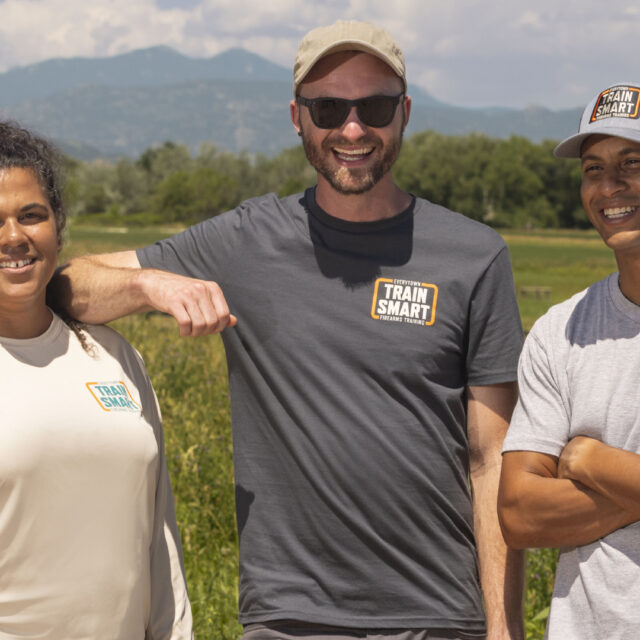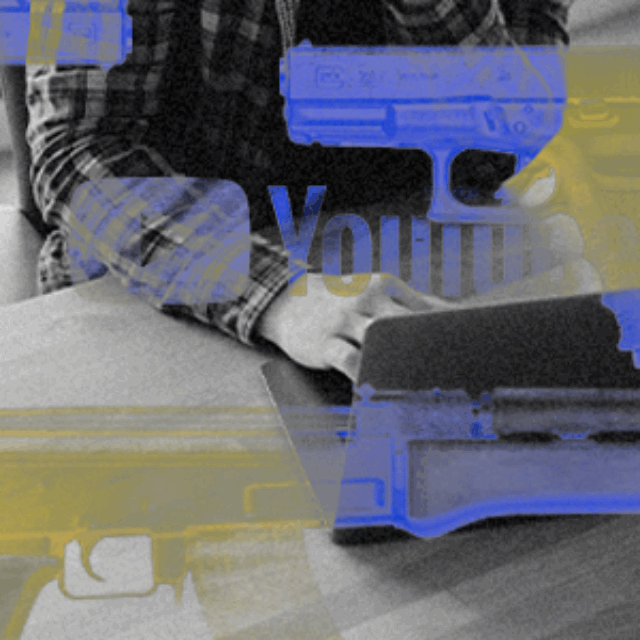Local Gun Violence Dashboards
A step-by-step toolkit for leveraging data toward community safety.
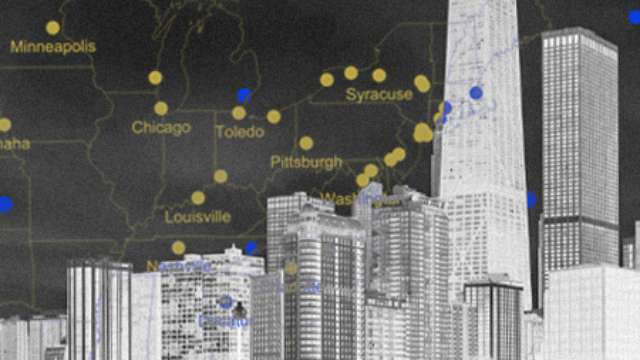
Executive Summary
Every year more than 19,000 people are killed in gun homicides1Everytown For Gun Safety Support Fund, “EveryStat: United States,” https://everystat.org/. Everytown Research analysis of Centers for Disease Control and Prevention, National Center for Health Statistics. WONDER Online Database, Provisional Mortality Statistics, Multiple Cause of Death (accessed September 1, 2024). Average: 2019 to 2023. Gun homicides include shootings by police. and more than 35,000 are wounded by gun assaults.2Everytown For Gun Safety Support Fund, “EveryStat: United States,” https://everystat.org/. Everytown Research analysis of 2020 HealthCare Cost and Utilization Project nonfatal gun injury data. Gun assaults include shootings by police. This violence concentrates in cities at disproportionate rates, making it an imperative public health issue for mayors, law enforcement, and community leaders alike. But the degree to which one gun violence reduction strategy is more appropriate than another depends greatly on local contexts.
Timely and accessible local gun violence data is vital. With it, police departments can make better decisions about when and where to deploy officers; community violence intervention programs (CVIs) can efficiently target and evaluate their efforts; and public health agencies can identify and improve upon the most relevant risk and protective factors. Yet, to-date, only 13 US cities publish local gun violence dashboards on at least a monthly basis.
In response to this common and critical need for up-to-date, comprehensive local gun violence data, Everytown for Gun Safety Support Fund (Everytown) launched a Gun Violence Data Fellowship in 2022. Grant funding enabled three cities—Louisville, Memphis, and Pittsburgh—to each hire a fellow, develop a local gun violence data dashboard, and leverage it toward improved public safety. This toolkit reflects key learnings from the fellowships.
Designed for stakeholders in mayor’s offices and police departments, this toolkit offers tangible guidance on how to develop local gun violence data capacity, infrastructure, and transparency—all toward the goal of creating safer cities. Its sections cover the importance of public-facing dashboards, their key components, and a 10-step process for building them out, including: (1) Complete a data inventory; (2) Determine readiness; (3) Assign or hire a data practitioner; (4) Engage local stakeholders; (5) Design the interface; (6) Integrate the data; (7) Test and refine; (8) Prepare for launch; (9) Promote its use; and (10) Evolve and adapt to new needs.
The toolkit also features useful tools and resources, including case studies describing the fellows’ experiences, a gun violence data inventory, and links to dashboards that can serve as examples.
Nearly every city can activate its local gun violence data immediately. With the information presented in this toolkit and relatively limited resources, many can also develop and scale public-facing dashboards to inform and evaluate local evidence-based solutions and help keep their communities safe.
Introduction
Every year, more than 54,000 people are shot and killed or wounded in gun homicides and assaults.1Everytown For Gun Safety Support Fund, “EveryStat: United States,” https://everystat.org/. Everytown Research analysis of Centers for Disease Control and Prevention, National Center for Health Statistics. WONDER Online Database, Provisional Mortality Statistics, Multiple Cause of Death (accessed September 1, 2024). Average: 2019 to 2023. Gun homicides include shootings by police. The weight of this crisis is not felt equally, as gun homicides and assaults concentrate in cities at disproportionate rates. This leaves local leaders with a shared challenge: How to move the needle on gun violence.
Selecting the most appropriate local gun violence prevention strategies and ensuring that they are working as intended requires insight into when, where, and amongst whom the violence is clustered, as well as which resources can and are being used to address it. Likewise, access to timely and easy-to-interpret data on the issue is key.
Based primarily on the insights gleaned through Everytown’s Local Gun Violence Data Fellowship program, the ultimate goal of this toolkit is to equip cities with clear steps on how to develop public-facing dashboards that inform, bolster, and increase the impact of public safety efforts. It is meant for stakeholders in city government—such as leaders in mayors’ offices or law enforcement—who are eager to leverage the power of data to advance effective solutions in the fight against gun violence. These insights are distilled in the guidance below.
Everytown’s Fellowship
In response to this common and critical need for up-to-date, comprehensive local gun violence data, Everytown launched a Gun Violence Data Fellowship in 2022. Grant funding enabled three medium-sized cities—Louisville, Memphis, and Pittsburgh—to each hire a fellow with a background in data analysis to be placed strategically at the nexus of their mayor’s office and police department. The fellows’ primary responsibilities included developing a local gun violence dashboard and ensuring its integration into daily operations and community collaborations, all toward the goal of building safer communities.
Meet the Fellows

Dr. Ivan Benitez began his fellowship in Louisville’s Office for Safe and Health Neighborhoods (OSHN) after completing his doctorate in criminal justice in August of 2022. The tool he created—the Louisville Metro Gun Violence Dashboard—features several useful functionalities, including neighborhood and gunshot wound filters, as well as a video tutorial. This dashboard is now routinely used to inform local CVIs of emerging gun violence trends and assess their impacts.

Garrett Jeanes brought a background in data analysis and military firearms and ammunition to the Pittsburgh Police Department as a fellow in April 2022. During his time as a fellow, Garrett built and launched the Pittsburgh Violent Crimes Dashboard, which provides detailed information and visualizations of local homicides and nonfatal shootings and is currently used to allocate public safety resources and promote transparency.

Rosi Lara joined Memphis’s Violence Intervention Program in April 2022, bringing several years of experience in data and legal analysis. Through this experience, she developed an internal local gun violence dashboard, which the mayor’s office relies on to evaluate and identify target populations for its focused deterrence and hospital-based violence intervention programs.
This endeavor enabled the three cities to launch their own local gun violence dashboards. Importantly, it also generated a set of practical, transferable insights that can help other jurisdictions do the same. Of particular relevance to this toolkit, two of the cities’ dashboards—Louisville’s and Pittsburgh’s—were public-facing, and are thus highlighted via in-depth case studies available in Appendix A and Appendix B.
The Case for Investing
Investments in data capacity, infrastructure, and transparency are a necessary starting point for ensuring that local gun violence prevention efforts are set up for success. Activating this data creates opportunities to improve community safety by:
- Guiding strategies both within and across agencies;
- Informing resource-deployment decisions;
- Promoting accountability through monitoring, evaluation, and research;
- Highlighting systemic and immediate drivers of gun violence; and
- Eliciting new partners with novel perspectives and solutions.
Today, only 35 US cities publish local gun violence data on at least a monthly basis, and even fewer do so using dynamic dashboards. Many more report annual crime data—including counts of firearm homicides and firearm aggravated assaults—to the FBI, but their dashboard lags more than a year behind and lacks the filters necessary to guide local strategies (e.g., firearm-specific offenses and neighborhood-level trends).2Federal Bureau of Investigation, “Crime Data Explorer,” Uniform Crime Report, June 10, 2024, https://cde.ucr.cjis.gov/. With relatively little time and money, police departments can use the same data they typically report to the FBI to create up-to-date local data tools, but most do not. Reasons for this include a lack of national standards and reporting requirements3John K. Roman, “A Blueprint for a U.S. Firearms Data Infrastructure” (Bethesda, MD: NORC at the University of Chicago, October 2020), https://norc.org/content/dam/norc-org/pdfs/A%20Blueprint%20for%20a%20U.S.%20Firearms%20Data%20Infrastructure_NORC%20Expert%20Panel%20Final%20Report_October%202020.pdf. as well as outdated or error-prone technologies, limited analytical capacities, and reservations about data transparency. The net result of these challenges is that cities across the country are not using a powerful resource at their fingertips—local gun violence data—to adopt and assess effective public safety solutions.
Local Dashboards 101
Public-facing local gun violence dashboards provide users with a series of easy-to-interpret data visualizations that convey the ways in which gun violence is affecting the local community today. Although their exact forms will vary based on a city’s goals, resources, and available data, all local gun violence dashboards should ultimately feature:
- Fatal and nonfatal shootings4These are often defined based on gunshot wound fatality or crime type (i.e., homicides versus aggravated assaults).
- Up-to-date data5I.e., published at least monthly and ideally daily.
- At least five years of historical data
- Victim demographic information6 Demographic information should include at minimum race/ethnicity, gender, and age group.
- Geographic filters7E.g., neighborhood, council district, police district, and/or CVI catchment area.p
- Incident-level open datasets
Not all of this information is necessary to create a valuable initial dashboard, but cities should strive to include all of these criteria over time. Ultimately, these features are essential to achieving a dashboard’s full impacts and to creating a larger ecosystem of comparable gun violence datasets across cities. Dashboards can also be strengthened by adding additional metrics that the city may collect, like firearm suicides, shots fired, other types of violent offenses, gun recoveries, and shootings by law enforcement.
Dashboard Examples
Chicago’s Violence Reduction Dashboard
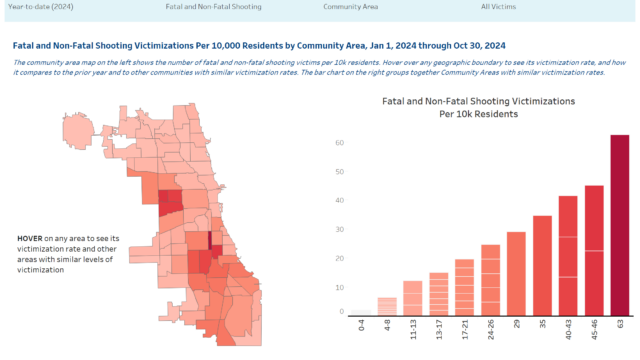
Launched by the University of Chicago Crime Lab in 2021, Chicago’s Violence Reduction Dashboard stands out as one of the strongest in tracking, analyzing, and conveying local gun violence trends. It was the first to allow users to filter outcomes by street outreach organization—a feature that not only allows CVIs to identify emerging community needs and risk levels quickly, but also to build their evidence bases, identify areas for expansion, apply for grants, and more. One of their visualizations, “The Safety Gap,” lets users easily comprehend that gun violence disproportionately clusters in a small number of areas, where it worsens public health outcomes among communities that have experienced decades of systemic racism and disinvestment.1 Ted Gregory, “Data on Demand: The Power of the UChicago Crime Lab’s Violence Reduction Dashboard,” The University of Chicago, April 29, 2022, https://harris.uchicago.edu/news-events/news/data-demand-power-uchicago-crime-labs-violence-reduction-dashboard.
Mapping Philadelphia’s Gun Violence Crisis

In Philadelphia, the city controller’s office launched its dashboard, Mapping Philadelphia’s Gun Violence Crisis, in 2020. It uses dynamic statements (i.e., ones that include static text, but numbers that change to reflect recent trends) at the top of the page to quickly inform users of year-to-date fatal and nonfatal shooting counts, and how this differs from the year prior. Also unique to this tool, the city synced its police and court datasets to show users how often gun violence incidents are prosecuted, further heightening accountability on an important issue.
Police Data Dashboard: Firearms in Nashville
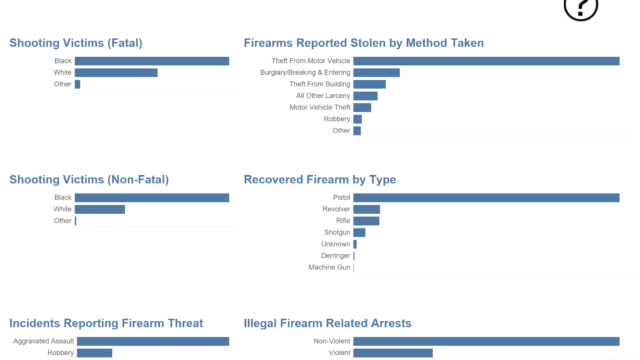
Launched by the Metropolitan Nashville Police Department in 2021, the Police Data Dashboard: Firearms in Nashville features unique data, including means by which guns were stolen (e.g., thefts from cars, burglaries, robberies). This serves as a great example of a city adapting its dashboard to address a pressing local problem, as research shows that gun thefts from cars are particularly high in Nashville.
Steps for Developing
For many, the benefits of local gun violence dashboards are clear, but the path to launching and effectively using one can feel overwhelming. In reality, the resources needed to develop such a dashboard are not particularly extensive. And, with the guidance gleaned through Everytown’s Gun Violence Data Fellowship, the process for doing so can be broken down into 10 manageable steps. Everytown’s Research and Local Initiatives teams can also serve as resources and connectors, should a city encounter any questions along the way.
1. Complete a data inventory
A data inventory takes stock of the jurisdiction’s existing gun violence data, with an eye toward:
- Who owns, has access to, collects, manages, and analyzes the data?
- What data is being collected (e.g., crime types, injury levels, demographics, and locations)?
- Where is this data stored and published, both internally and externally?
- When (or how often) is the data being analyzed and published?
- Why is this data being collected (e.g., reporting requirements, strategy guiding, evaluation)?
Appendix C provides a data inventory template that jurisdictions can use as a starting point in this process. Note that most of the data is likely housed in the city’s law enforcement agency and may require special permissions to access or share across agencies. Informational interviews with key law enforcement stakeholders, like departmental leaders, crime analysts, and IT professionals can be helpful at this stage.
2. Determine readiness
Once the inventory is complete, practitioners should assess it to ensure that the jurisdiction has sufficient data collection, infrastructure, staffing, and buy-in to build a dashboard. This means making sure that the city collects enough of that data to create a dashboard that feels useful to its community and its specific needs.
A city’s openness to and belief in the value of gun violence data transparency is also essential for success. One good indicator of this is whether the city already has other public-facing crime dashboards and/or open datasets. Cities whose leaders express reservations may find it helpful at this stage to connect with colleagues in another city that has succeeded in launching its own dashboard.
Not quite dashboard-ready? Here’s what every city can do immediately.
If the assessment reveals that a city is not ready for dashboard development yet, leaders can still take preliminary steps.
- Cities can immediately add available gun violence data (e.g., firearm homicides and firearm aggravated assaults) to routine public-facing crime reports and data tools like CompStat, annual reports, and crime maps. Three good examples are Los Angeles, California, Wilmington, Delaware, and Durham, North Carolina.
- A city can also immediately develop and support a plan to collect comprehensive gun violence data and automate its analysis moving forward.
- Finally, a city may decide to launch an internal dashboard for a specific purpose like officer deployment or CVI evaluation before releasing a public-facing one, as was the case in Memphis. Establishing early success metrics as well as a timeline can be helpful in ensuring that the dashboard eventually becomes public-facing, thus enabling greater transparency and innovation down the line.
3. Assign or hire a data practitioner
The data practitioner assigned to lead this project can be based in either a mayor’s office or the local law enforcement agency and can be a new hire or current employee(s). A strong candidate will have skills and experience in data science, crime analysis, and/or data visualization, and will be responsible for technically developing and maintaining the dashboard, as well as conveying key insights to various stakeholders. Determination and comfort with self-led learning are more important to a practitioner’s success than direct experience with the city’s specific softwares. Some cities may also opt to outsource the tool’s development to a local university or research institution. Regardless, once the practitioner is on board, their initial steps will almost always include completing data confidentiality certifications, reviewing and completing the city’s data inventory, and engaging local stakeholders.
For cities that intend to start with a basic, no-frills dashboard and are already equipped with rich gun violence data and analytical capacity, this can be achieved with part-time work over a few months’ time. For cities aspiring for a more comprehensive dashboard, and/or lack experience analyzing gun-specific crime trends or launching public safety dashboards, the equivalent of a full-time data practitioner for closer to a year may be more appropriate. Either way, the city should allow for up to 10 percent of a practitioner’s time thereafter to maintain the dashboard moving forward.8If the tool is fully automated by launch, it will likely require far less time to maintain thereafter, with the practitioner’s ongoing efforts limited to checking for and resolving any glitches, ongoing dashboard promotion, and building out occasional new features. If not automated, the practitioner might be vetting and pushing live the daily data updates and may ultimately dedicate some time to automating the dashboard down the line.
4. Engage local stakeholders
Understanding the local political context and stakeholder priorities is essential for establishing a clear and unifying local gun violence dashboard vision. By meeting with people from the mayor’s office, police department, city council, CVIs, community-based organizations, and so on, the practitioner can gain important recommendations about what data to present and what design features to include. A mentor or supervisor who champions data initiatives is often instrumental in forging these initial connections and conveying organizational investment in the project. Sending an organization-wide introduction email and attending routine meetings (e.g., CompStat, shooting reviews, community events) can also help with this.
Sharing example dashboards from other cities with stakeholders can show them what’s possible. Practitioners can also ask questions like, “How could access to local gun violence data inform your work?” to generate ideas about how the dashboard could be used. Stakeholder answers can help establish goals for the dashboard’s use and impact.
5. Design the interface
With the data inventory and stakeholders’ insights in mind, the next step is designing the tool. Drafting some simple mock-ups and soliciting feedback is particularly helpful at this stage. Local gun violence dashboards should be easy to use, clear, and purposeful. To achieve this:
- Prioritize usability by average community members and supplement this with an incident-level open dataset for more advanced users;
- Use visualizations that directly answer stakeholders’ most pressing questions;
- Feature multiple visualizations and filters that allow users to identify key trends and understand how they vary across community, time, and place;
- Incorporate a combination of line graphs, heat maps, pie charts, tables, and dynamic text/sentences;
- Include instructions, a tutorial video, and/or a frequently asked questions page; and
- Describe the methodology, including variable definitions, data sources, update frequencies, and limitations.
The dashboard software will also influence design options. Although this decision is often dictated by which software the city already has licenses for, common options include Power BI, i2, and Tableau.
6. Integrate the data
The practitioner’s next task is to extract, clean, and integrate the data into the dashboard software. Automating this process as much as possible is key to ensuring the dashboard’s sustainability. This particularly technical step typically requires:
- Locating the data in the law enforcement agency’s datasets;9 E.g., records management system (RMS), computer aided dispatch (CAD), and complementary forms.
- Extracting the data and rewriting it into a CSV;10This is typically done with a programming language like SQL—which the department’s IT team often assists with.
- Structuring the CSV fields to support intended analyses and visualizations;
- Obfuscating incident locations to remove personal identifiers but retain accuracy;11This is often done through a data script.
- Uploading the CSV to an open data portal;
- Feeding the data into the dashboard software; and
- Customizing the visualizations to reflect the city’s intended design features.
Integrating the data typically requires the biggest portion of a practitioner’s time. The jurisdiction’s relevant IT team should be involved in these processes as well.
7. Test and refine
Once a beta version of the dashboard has been built, it’s time to conduct quality assurance on data accuracy, tool functionality, and user experiences. This will likely include:
- Vetting basic analyses by time, geography, etc., with an eye toward unexpected results that may reflect things like changes in reporting requirements or data extraction problems;
- Comparing results to similar datasets12E.g., hospital admissions, murder trends, and the Gun Violence Archive. and reports to help ensure alignment;
- Confirming adherence to compliance and regulatory policies (e.g., no personal identifiers);
- Checking all possible filter combinations for bugs; and
- Making iterative improvements based on testers’ feedback.
At least two data practitioners, including the person or people who created the tool plus an additional individual, should conduct all technical testing and vet each other’s work. Primary users from the mayor’s office and police department should also test the tool early enough to provide feedback on its usability. At least one representative from all of the stakeholder groups consulted during Step Four should be invited to do so as well. Though this first wave of testing will be the heaviest lift, a city should plan for routine testing of the data and tool to help ensure its continued relevance and accuracy.
8. Prepare for launch
Like any tool, a dashboard is only helpful if it is used—and used effectively. Much of the work to make sure a dashboard helps prevent and reduce gun violence starts with its launch. Strategies for spreading the word about the existence of a new local gun violence dashboard include hosting a press conference, elevating the dashboard on social media, facilitating an instructional webinar, reaching out to local universities, and collaborating with the originally consulted stakeholders on individualized distribution plans within their respective communities. Highlighting a novel finding gleaned through the dashboard (e.g., the population most impacted by gun violence is particularly young) or an early use case (e.g., a local CVI is expanding into a new neighborhood following recent spikes in gun violence) can be a compelling way to generate use.
9. Promote its use
Once the dashboard is launched, the practitioner should work with stakeholders to see that it is integrated into ongoing strategy, problem-solving, and resource-allocation processes. For example, when equipped with insights from local gun violence data, police departments can make better decisions about when and where to deploy officers; public health agencies can identify and improve upon the most relevant risk and protective factors; and CVIs can efficiently target and evaluate their intervention efforts. The practitioner should also work with IT to set up user tracking analytics (via Google Analytics, Power BI, etc.) to capture how often people are engaging with the dashboard, which features they’re using most often, and how they typically navigate across the tool. To ensure continued familiarity with the tool, the practitioner should host at least annual trainings, accessible to each of the original stakeholders’ teams.
10. Evolve and adapt to new needs
To maximize impact, a local gun violence dashboard can and should evolve as additional data becomes available and promising new use cases are identified. One opportunity for ongoing development is to continue adding gun violence data (e.g., gun suicides, crime gun recoveries, and gun thefts) to the dashboard to make it more comprehensive. Dashboards can also be linked to other data systems in the city such as those of hospitals, schools, housing, or courts. This will introduce opportunities to integrate social and economic indicators, which can be used to highlight how improvements to things like street lighting, green space, local businesses, available housing units, and well-performing public schools correlate with reductions in local gun violence. Community surveys and/or meetings can help to identify priority dashboard expansions. As trust and collaboration with these stakeholders deepen over time, it may become clear that early data access, notifications, or customized dashboards can help support the work of other partner agencies and organizations too. Over time, dashboards can also be used to evaluate the evidence base of gun violence interventions.
Conclusion
Public-facing dashboards equip city leaders with reliable pictures of local gun violence and allow them to respond more effectively to it. Coupled with efforts to strengthen communication and collaboration across city agencies and partners, a dashboard can help cities lead the way in developing local evidence-based solutions to keep their communities safe. Not every city may be ready to develop and implement a full-fledged gun violence dashboard, as certain conditions must be present to do so. But all cities can—and should—take steps to activate local data. As Everytown’s Gun Violence Data Fellowship program and this toolkit show, building a local dashboard is a realistic, attainable, and imperative goal for most cities striving to keep their communities safe from gun violence.
-
Acknowledgments
Everytown for Gun Safety Support Fund would like to gratefully acknowledge city leaders in Louisville, Memphis, and Pittsburgh for their partnership in Everytown’s Gun Violence Data Fellowship; Ivan Benitez, Rosi Lara, and Garrett Jeanes for developing exemplary dashboards in their respective cities; Sheryl Goldstein, Joseph Arroyo, and Bennett Midland for expertly managing the fellowship experience; and the Chicago Crime Lab for carefully reviewing an early draft of this report.
Appendices
A. Louisville case study
When Louisville onboarded their gun violence data fellow, Dr. Ivan Benitez, in 2022, they strategically stationed him in the Office for Safe and Healthy Neighborhoods (OSHN). OSHN is housed under the mayor’s office, but routinely liaises and collaborates with the Louisville Metropolitan Police Department (LMPD). This positioning offered the best of both worlds: Dr. Benitez was part of a team that led innovative, community-centered safety strategies and was able to tap into strong existing relationships with the folks in law enforcement who house the city’s gun violence data.
At the time of Dr. Benitez’s arrival, there was clear momentum among city leaders to find local gun violence solutions. As in many other cities, gun homicides and nonfatal shootings had been steadily increasing in Louisville since 2018 and worsened even more during the COVID-19 pandemic. The city was eager to funnel American Rescue Plan funding toward the communities where it could make the biggest impacts—which meant they needed to leverage this data. They were also open to creating public-facing data tools, as indicated by an existing (though outdated) homicide dashboard and an extensive city open data portal.
Dr. Benitez quickly engaged with law enforcement stakeholders to complete a data inventory. He started by attending LMPD’s weekly CompStat and shooting review meetings. The shooting review meetings were particularly helpful: Representatives from OSHN, law enforcement, courts, corrections, group violence intervention, and ATF reviewed homicides and shootings that occurred across the city in the week prior, with the goal of identifying leads that could clear the cases. The lieutenant who ran these meetings became a mentor, offering advice and connections. His trust in Dr. Benitez signaled to his colleagues the importance of this work, which was instrumental in cultivating buy-in. Soon Dr. Benitez was meeting with sworn officers in the homicide unit, crime analysts, CVI managers, and the mayor to identify their project goals and solicit feedback as his work progressed.
Early on, Dr. Benitez also explored other cities’ local gun violence dashboards for inspiration. He connected with one of the original developers of Chicago’s Violence Reduction Dashboard,16Chicago Mayor’s Office of Violence Reduction, Violence Reduction Dashboard, accessed September 8, 2024, https://www.chicago.gov/city/en/sites/vrd/home.html. who was able to answer many of his technical questions. When it came time to build the tool, the city’s IT team used SQL to extract the data from LMPD’s RMS (Mark43) and format it into a CSV file according to Dr. Benitez’s instructions such that each column reflected a key variable to be featured in the dashboard. This file now lives on Louisville’s open data portal, where it is updated daily. Dr. Benitez’s data cleaning focused primarily on checking addresses to ensure that they were properly obfuscated in a way that accurately represented the incident’s general location without revealing victim identifying information. He also cross-checked this dataset against another LMPD homicides dataset to ensure reliability. The softwares used (e.g., Excel, Power BI) were all ones LMPD already had within their data ecosystem. Dr. Benitez brought to the position previous experience with data visualization, but he learned the mechanics of Power BI on the job largely through online videos.

Ultimately, the Louisville Metro Gun Violence Dashboard was designed to feature:
- Data on homicides by gunshot wounds, nonfatal shootings, and ShotSpotter alerts;
- Line charts and tables with trends by year, month, day, and time;
- Heat maps filterable by neighborhood, council district, zip code, and police division; and
- Pie charts of demographic breakouts like race/ethnicity, sex, and age group.
As a last step before launch, Dr. Benitez conducted quality assurance, which involved analytics testing with a small dataset, and soliciting feedback from the mayor’s office and LMPD. Their feedback was largely positive, with small suggestions on things like colors, further affirming that Dr. Benitez had captured their project goals successfully.
The dashboard’s launch was marked with a press conference at Louisville Metro Hall.17Louisville-Jefferson County Metro Government, “Mayor Greenberg to Announce the City is Now Operating a Comprehensive, Detailed Crime Dashboard That Reports Real Time Gun Violence in All City Police Districts,” LouisvilleKy.gov, November 27, 2023, https://louisvilleky.gov/news/mayor-greenberg-announce-city-now-operating-comprehensive-detailed-crime-dashboard-reports-0. Presenters included the mayor, the OSHN director, LMPD’s assistant chief of accountability and improvement, and Dr. Benitez. This event quickly elevated the dashboard’s public profile. Today it is used by a variety of stakeholders including:
- OSHN staff, who use the data to evaluate current CVIs and determine which communities new ones should serve;
- CVI managers, who review the dashboard weekly with an eye toward the blocks where gun violence is clustering, to inform violence interrupter deployment decisions;
- LMPD’s Nonfatal Shooting Unit, which also reviews the dashboard weekly to identify trends and inform officer deployment decisions;
- Community members and the press, who refer to the tool for up-to-date information about gun violence in Louisville.
The dashboard isn’t fully automated yet. Dr. Benitez has to refresh the CSV’s linkage to Power BI every morning and double-check that addresses are properly being recorded. But the city is working toward full automation quickly, at which point his role will shift more toward checking for glitches that can prevent uploads. At the conclusion of his fellowship, Dr. Benitez was hired by the city for the role of data and evaluation executive administrator. In this capacity, he continues to maintain and update the city’s local gun violence dashboard, in addition to evaluating their CVIs.
B. Pittsburgh case study
When Pittsburgh learned that they were receiving a gun violence data fellow, they decided to position the role within the Pittsburgh Bureau of Police (PBP). One primary reason for this was to ensure complete data access. Pennsylvania’s Criminal History Record Information Act,18Commonwealth of Pennsylvania, Office of Attorney General, Criminal History Information Records Act Handbook, 2018, https://www.attorneygeneral.gov/wp-content/uploads/2018/01/chria.pdf. a law that ensures crime data confidentiality, requires a high degree of clearance to access crime data, and the fellow being stationed within PBP would ultimately help to navigate this. Once hired, Mr. Garrett Jeanes promptly completed state and federal certifications. Within two weeks, he received data access comparable to PBP’s crime analysts.
Mr. Jeanes also made conscious efforts early on to engage with stakeholders. His supervisor, a violent crimes unit sergeant, helped make initial introductions. Mr. Jeanes then scheduled individual follow-up meetings, connecting with homicide detectives, crime analysts, and representatives from the Mayor’s Office of Public Safety, REACH (a local CVI), and the city’s group violence intervention team. Throughout his fellowship, these people became allies in identifying project goals, troubleshooting challenges, and uplifting the dashboard.
In completing a data inventory, Mr. Jeanes quickly learned that PBP collects gun violence data across a number of systems, including their RMS (Central Square), CAD, and individual Microsoft forms. He used R scripts and DAX coding—both of which he taught himself on the job—to confirm reliability across these data sources. He quickly realized that while the Microsoft forms had the richest gun violence data, they were not designed with analysis in mind. He ultimately re-created this form, and worked with PBP to create a system whereby when an officer logs an incident as a shooting, they are prompted to complete this form. Mr. Jeanes then checks the form and once accurate, integrates it into the city’s master gun violence CSV. He runs new incidents through a coding script, which obfuscates addresses to a nearby location to maintain general area accuracy without revealing sensitive information. Though this means that the city’s process isn’t fully automated yet, they are nearing some technology upgrades that should enable this soon.
Since PBP already used Microsoft platforms, Mr. Jeanes next uploaded this data to Power BI to create the dashboard. The visualizations featured in the Pittsburgh Violent Crime Dashboard are quite similar to Louisville’s, with a few notable exceptions driven by local priorities. First, based on feedback from PBP, Mr. Jeanes included all homicides rather than gun-specific ones to avoid confusing users, should they find different counts in other sources that report all homicides. Second, the dashboard features a bar chart of total incidents each year to date, with breakouts by homicides versus nonfatal shootings. This visualization allows users to quickly comprehend changes in the fatality of Pittsburgh’s gun violence over time. Third, most of the dashboard visuals are filterable by age group. As in many cities, Pittsburgh’s gun violence victims appeared to be getting younger over time. These filters allow programs that specifically serve young people to access and be informed by the most relevant data.

Mr. Jeanes engaged members of both PBP and the mayor’s office to test the tool. Stakeholders agreed that the dashboard successfully promoted transparency, allowed users to identify emerging trends, and signaled that the city is prioritizing local gun violence in a collaborative manner. It was ready for launch.
Once the tool went live, it was quickly integrated into routine operations among diverse stakeholders:
- PBP chiefs and commanders run biweekly meetings, where they review the number of incidents and year-to-date percentage changes in homicides and nonfatal shootings, to inform priorities in the week ahead;
- REACH CVI staff members review the data weekly, to identify priority geographic areas and demographic groups; and
- Community members invite Mr. Jeanes to neighborhood meetings, where he presents the data and joins discussions about hyperlocal safety challenges and proposed solutions.
It took a bit longer to integrate the dashboard into folks’ routine activities outside of larger meetings. For a while, law enforcement officers and city employees continued to ask crime analysts one-off questions about gun violence rather than referencing the tool. Mr. Jeanes shifted this culture by first responding to email questions with a written answer, a screenshot of the dashboard, and a link. Over time, he shifted to sending users just a link to the dashboard, until eventually, fewer questions were coming in, as staff members’ confidence using the tool increased.
Just like in Louisville, Mr. Jeanes was permanently hired by PBP at the conclusion of his fellowship. His new role is crime analyst. He still maintains the city’s gun violence dashboard, in addition to expanding his work on other types of crime and use of force.
C. Data Inventory Template
Potential Additions to the Data Inventory
a. Based on local priorities and the depth of data available, cities may wish to include additional gun violence variables in their inventory, such as shots fired, firearm robberies, weapons offenses, firearm recoveries, firearms lost and stolen, firearm suicides, and fatal and nonfatal shootings by law enforcement.
b. Cities can also opt to explore whether more advanced incident-level information is available for each of the variables, including arrests, clearances, evidence recoveries, gunshot wounds, notification type (e.g., 911 vs. gunshot detection software vs. patrol encounters), and offender demographics. While not essential, this information allows for an even deeper understanding of how local gun violence is solved, particularly by law enforcement. These types of build-outs are most feasible in cities with robust gun violence data infrastructures.
Learn More:
Everytown Research & Policy is a program of Everytown for Gun Safety Support Fund, an independent, non-partisan organization dedicated to understanding and reducing gun violence. Everytown Research & Policy works to do so by conducting methodologically rigorous research, supporting evidence-based policies, and communicating this knowledge to the American public.




